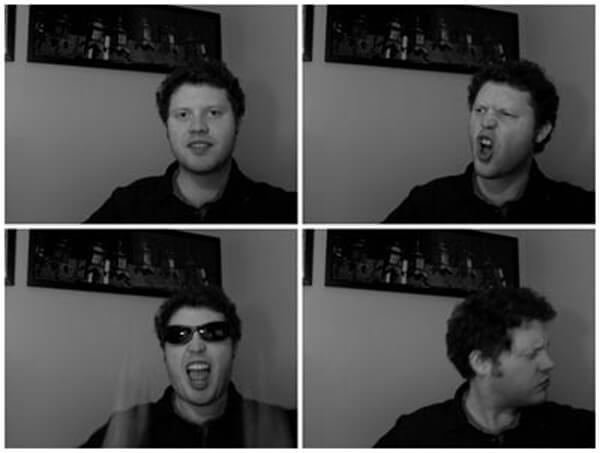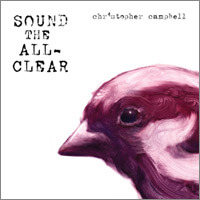
The all-clear is a lie.
While the expression “all-clear” dates back to the early 20th century,1 it is perhaps most associated with the all-clear sirens that were developed during WWII and similar sirens that became pervasive during the cold war. In the UK, which faced heavy German bombardment, the all-clear siren was marked by a single, continuous tone, unlike the air raid siren which fluctuated in pitch. In many ways this seems fitting, that after the fear and danger of the bombing passed, one note would sing above the fray, clear and steady to let everyone know that all was well.
But all was not well.

The problem with the term all-clear is the “all” part. The skies may have been free from German bombers, but it was only a matter of time before the air raid sirens would sound again. Life would return to normal, but only assuming that your version of normal included knowing what to do in the event of bombs being dropped in your general direction. An all-clear is therefore wrought with tension. It may signal that danger has passed, but it cannot guarantee that it won’t return.
In this sense, Christopher Campbell has masterfully titled his first album, for therein lies a tension between a beautiful sense of peace and a fear of impending doom that will not quickly fade. Even the description on Innova’s website reads simply, “Apocalypse averted.” This music does not use tension and relaxation to create expectation and drama for the listener, but rather seems to explore what happens when the two co-exist.2 That is not to say that there aren’t varying degrees of discomfort, but rather that the music is not driven by movement from tension to relaxation. It is more about what happens when the tension won’t go away.
 There are a plethora of sounds in Sound the All-Clear, including a wide range of instruments homemade and from around the world, which Campbell masterfully stitches together to create his sound worlds. But it is not just the beautiful placement of sound that makes this album work so well; Campbell also has a knack for giving listeners just enough of the familiar so that they may be willing to move well beyond their comfort zone.3 It may be as simple as the emergence of a melodic figure, the sudden appearance of a recognizable chord, or even just a familiar sound after so much exploration, but it is never far away. Such grounding makes Sound the All-Clear seem more an invitation than a manifesto, and it is all the better for it.
There are a plethora of sounds in Sound the All-Clear, including a wide range of instruments homemade and from around the world, which Campbell masterfully stitches together to create his sound worlds. But it is not just the beautiful placement of sound that makes this album work so well; Campbell also has a knack for giving listeners just enough of the familiar so that they may be willing to move well beyond their comfort zone.3 It may be as simple as the emergence of a melodic figure, the sudden appearance of a recognizable chord, or even just a familiar sound after so much exploration, but it is never far away. Such grounding makes Sound the All-Clear seem more an invitation than a manifesto, and it is all the better for it.
Still, do not think for a moment that this is somehow “easy listening” music to be played in the background while you host a little cocktail party in your loft. Campbell’s music remains challenging. Track 9, Shining Furrows, has more recognizable instrumentation than most others, but it is a tense flurry of activity. The parts seem completely unrelated to one another, each seems to have more energy than can be contained, and the vigor is relentless even as activity diminishes near the end. The following track, Ritual Waking, Ritual Sleeping, is much more tranquil, but often seems to sit atop a wellspring of frenetic energy that is only barely contained.
But, and this is probably the most important point I’ll make about this album, Sound the All-Clear is extraordinarily compelling. One cannot sit down and listen to one or two tracks and then blithely walk away. To listen to this album is to step into a different world and become lost in sound. Block out a chunk of time for listening to Campbell’s music, and listen to it a little it more loudly than is comfortable, and I think you’ll be richly rewarded. If, however, you start listening knowing that you have to go pick up the kids in 15 minutes, you’ll find yourself shockingly torn away from his world, completely disoriented, and justifiably disappointed. (Alternatively, your kids will become worried and feel abandoned after you decide to listen to just one more track…)
This is fantastic music, and it is worthy of your complete attention. Anything less is a disservice. Buy the CD, support Christopher Campbell, and if we’re lucky he will give us even more worlds to explore in the not too distant future.
Christopher Campbell. Sound the All-Clear (Innova Recordings, #750, December 2011) | Buy it on Amazon
—
R. Andrew Lee is an avid performer of minimalist and postminimalist piano music and records for Irritable Hedgehog Music. Follow him on twitter: @andyleedma.
1. My source here is the Oxford English Dictionary. I didn’t include a link to the citation in the main body of the review because many won’t have online access to this resource. For those that do: http://www.oed.com/view/Entry/5192. For those that don’t, trust me?
2. This coexistence of consonance and dissonance is rife in Ann Southam’s music, with Eve Egoyan’s CD, Returnings, being an excellent example. Kelsey Walsh reviewed it for ICIYL here, and I reviewed it for Sequenza21 here.
3. Dygong’s The E-Sessions achieves the same effect but in a rather different way. The music is more experimental, but the intervening tracks of spoken text act as the anchor (see my review here.) To put it another way, this is sort of like the difference between being asked to swim far away from shore while keeping it in sight, and being dropped in the water with no land on the horizon. The former is possible, while the later is, if I may use some understatement, uncomfortable.
























